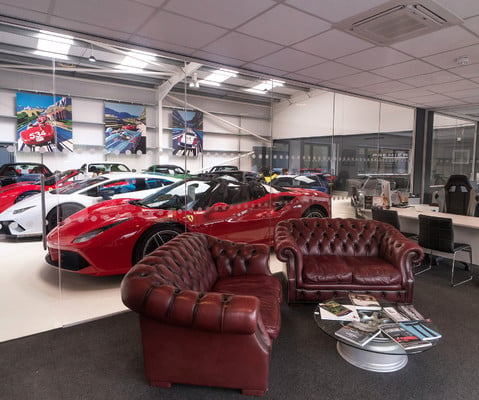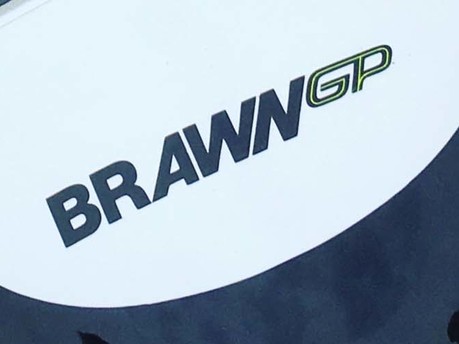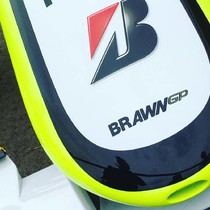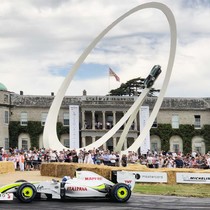
Brawn GP: 10 Years On
Throughout motorsports illustrious history there's always been a season, a driver, a track, a moment that provokes evocative memories. For most people though it’s quite often a remarkable machine that sticks in their memory. Whether that's the McLaren MP4-4, the Ferrari F2004 or the Lotus 79, each of these machines holds a place in motorsport folk law. However, for one machine, the story stretches far further than just an iconic race car.
This year sees the 10th anniversary of what can only be described as a motorsport fairy tale. That tale is of course about the remarkable achievements of Brawn GP and those of its iconic car, the Brawn GP-001.
Cast your mind back to the 2006 season. Japanese car giant Honda had just purchased the underdog British American Racing team. A team formed in 1999 it had slowly chipped away to earn its place as a best of the rest runner and in the latter stages on the mid-2000s managed to lift itself to lofty heights in the Formula One constructor's championship, thanks largely to Jenson Buttons breakthrough season in 2004.
The purchase of the team was to mark a serious assault on both F1 crowns by Honda. Testing dawned and much was written about the 2006 RA106 car being a front runner. However come the start of the championship, the car failed to achieve and proved horrendously unreliable. The season was to prove to be a tough one, before, at a changeable Hungaroring, Jenson Button triumphed over Fernando Alonso to clinch his first F1 victory at the Hungarian Grand Prix.
The foundations were set and 2007 promised to be the first serious championship challenge. It wasn’t to be. The car was a retrograde step and both Jenson Button and Rubens Barrichello languished outside of the points for most of the season.
Realising that something had to change, Honda made a beeline for technical genius Ross Brawn. The signing of Brawn was to set in motion a change of events which would come to etch Brawn Grand Prix into the history books.
2008 continued to be a challenging year for the Honda team, however, a significant rule change for 2009 left Ross Brawn hopeful. Accepting that the 2008 season was to be a lost cause, all development resource went into developing the RA109, which would later become the BGP-001.
Given Honda’s vast resource, parallel development programmes were undertaken at the teams base in Brackley and at Hondas R&D facility in Japan. It was to be this secondary programme in Japan that would yield the loophole in the regulations for the now infamous double diffuser.
Work continued at a pace and Jenson Button was retained for 2009 whilst Rubens Barrichello’s future with the team hung in the balance after the team flirted with the services of another Brazilian, Bruno Senna. Then came the financial crisis of 2008.
A financial shock of global proportions, the credit crisis of 2008 had dramatic implications on the entire automotive world. One of the largest automotive casualties was Honda, and given the tough decisions being made in Japan, the marque considered it unfeasible to continue in Formula One as the maker made large and sweeping cuts at home and thus pulled the plug on its F1 operation.
The future looked bleak for the team. Despite several high profile buyers entering their hats into the ring, a suitable deal couldn’t be found. It was around Christmas time of 2008 that Ross Brawn and Nick Fry decided to launch a management buyout. With the approval and limited funding from the Honda board and an engine deal from Mercedes, Brawn Grand Prix was born.
Throughout its development, the Brawn GP-001 was always intended to run the Honda power unit. Naturally, a change on this scale before the start of the season led to some compromise as the Mercedes engine was mated to the car. Despite the engineering challenges, Brawn GP was able to make a last-minute shakedown at the incredibly short Stowe circuit at Silverstone.
It’s at this shakedown test that the Brawn GP’s potency was first recognised. Jenson Button reported to his race engineer, Andrew Shovlin that the car provided a good balance and was responsive straight out the box. With a positive shakedown in their back pocket, the team headed out to Barcelona for the final group pre-season test. Joining the rest of the 2009 field on track for the first time, the Brawn GP BGP-001 delivered in devasting fashion.
What was to unfold over the course of the opening stages of the campaign was total dominance. With Jenson Button winning 6 of the first 7 races it was a fairy tale start to the campaign, however, the team wasn’t to have it all their own way as their early-season success with the innovative double diffuser was to be protested by rival teams.
After much lobbying with the sports governing body, the FIA, the team's diffuser concept was deemed legal and thus early season results still stood. The ruling, however, meant that other teams were to integrate the concept into their own design and it wasn’t long before the team had serious championship rivalry with Red Bull Racing come the season run-in.
Two further victories at the European and Italian Grand Prix’s would fall Brawn’s and Rubens Barrichello’s way, with the latter victory being the teams final 1-2. Despite a late-season surge from rival teams, Jenson Button and Brawn managed to hold on to seal both Championship titles at the penultimate round of the 2009 season at the Brazilian Grand Prix.
The season would end for the team with a final podium, Jenson Buttons 3rd place at the Abu Dhabi Grand Prix before the team was sold to Mercedes Benz Grand Prix. Brawn GP was only in existence for a mere 10 months but in those short months, the team, with its instantly recognisable fluorescent livery left their own indelible mark in the Formula One history books.
Brawn Grand Prix Racing Record:
Constructors Championships: 1
Drivers Championships: 1
Victories: 8
Podiums: 15
Pole Positions: 5
Fastest Laps: 4
Points: 172



